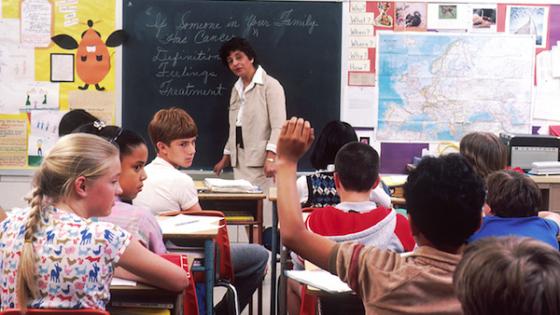Wealth (in the form of money, other financial assets, real estate, business property) helps individuals to cope with unexpected economic shocks, to finance – directly or as collateral – enrolment in education, the acquisition of new properties, or the launch of new businesses. For a given level of income, greater wealth is also associated with greater subjective wellbeing (Hochman and Skopek 2013). Thus, regardless of the talent, ideas, or effort of citizens, wealth inequality can limit their ability to accumulate human capital, carry out business projects, or be resilient in major economic crises.
One of the usual suspects underlying wealth inequality is intergenerational transfers, that is, inheritances and inter vivos gifts. Alvaredo et al. (2017) and Piketty and Zucman (2015) have estimated that the weight of intergenerational transfers in the total wealth of developed countries has increased during recent decades in parallel with the increase in wealth inequality, which could also reflect a relationship between the two processes. However, the literature analysing this relationship has not reached a consensus. To enrich the debate and explore this question in detail, we present here some results of our research on wealth inequality and intergenerational transfers (Palomino et al. 2021).
How do intergenerational transfers influence wealth inequality?
Broadly speaking, three types of analytical approaches to this question are employed. First, we have studies that measure the change in wealth after the receipt of inheritances (Boserup et al. 2016, Elinder et al. 2018) or those that compare the current distribution with a distribution in which the current value of inheritances and gifts received in the past is subtracted from current wealth (Crawford and Hood 2016, Karaggiannaki 2017). These papers mostly conclude that intergenerational transfers increase absolute inequality (monetary distance between individuals) but decrease relative inequality (the relative Gini index), although the effect may not last in the long run (Nekoei and Seim 2018). The result in relative terms is equalising because, among those who receive inheritances, transfers received by individuals at the top of the wealth distribution are lower (relative to previous wealth) than those received by those lower down that distribution.
However, a significant part of the population does not receive any significant inheritance or gift, the magnitude of the intergenerational transfers received in the lower part of the wealth distribution is much lower than in the upper part (Nolan et al. 2021). Thus, Feiveson and Sabelhaus (2018) compare the distribution of wealth observed in the US in 2016 with a hypothetical one in which all the wealth attributable to intergenerational transfers received is instead distributed equally among the population. They find that the richest 10% of the population then goes from holding 73% of total wealth to only 57%. This clearly illustrates how the counterfactual distribution taken as the reference point dramatically affects the conclusions reached.
The third approach analyses the importance of inheritances in the degree of correlation between the wealth of parents and children. Thus, Adermon et al. (2018) find that at least half of the correlation between parents and children is explained by inheritances. In the same vein, Fessler and Schürz (2018) conclude that having received an inheritance at any time in the past raises by 14 percentile points the position of the average household in the wealth distribution.
A new proposal for measuring the contribution of inheritances and gifts to wealth inequality
In our analysis, after controlling for age, gender and household size, we condition the distribution of wealth on the level of transfer received distinguishing six groups: (1) non-recipients not expecting to receive any inheritance or gift in the future, (2) non-recipients expecting some future transfers, (3) recipients of only small amounts, (4) medium-low recipients, (5) medium-high recipients, and (6) recipients of large intergenerational transfers. Additionally, due to its potential relation with transfers and to measure the net relevance of each factor, we also categorise by family background socioeconomic status (proxied by the education or occupation of the parents). The intuition of our method is that if intergenerational transfers (and family background) were unimportant, the distribution of wealth by these groupings would be very similar.
We assess this hypothesis for Spain (using the Household Finance and Consumption Survey, HFCS 2014), France (HFCS 2014), the US (Survey of Consumer Finances, SCF 2016), and the UK (Wealth and Assets Survey, WAS 2010-12). Although all are rich OECD countries, the wealth distribution and the taxation of wealth and wealth transfers vary across them, so the robustness of our results is of particular interest.
Illustrated in Figure 1 for France (with a similar pattern in the UK, Spain, and the US), we order individuals from lowest to highest wealth within their transfer receipt ‘group’ and then plot each group’s ordered wealth distribution. Note that we often refer here to the aggregate of inheritances and gifts as just ‘inheritances’ for convenience. We see that, for each percentile, the wealth of the two groups who have received the largest inheritances (in the third and even more so the fourth quartile of the inheritances distribution) is higher than that for the other groups. Since these differences are sizable, there is a relevant association between inheritances received and wealth inequality. Likewise, there are also marked differences between wealth distributions by groups when we consider inheritances and socioeconomic status simultaneously.
Figure 1 Distribution of wealth in France by intergenerational transfer groups
In short, our analysis tries to elucidate how inequality would change if we eliminated the association between wealth and the different levels of inheritances received, by finding a smoothed distribution in which wealth at each percentile is the same regardless of the inheritance group of the household. By comparing this counterfactual with the observed distribution, we can measure the contribution of inheritances and socioeconomic status to wealth inequality in the four countries analysed. Table 1 shows that the combined contribution of these two factors amounts to almost half of measured wealth inequality in the US, Spain, and France (49%, 47%, 45%, respectively) and to more than a third in the UK (36%).
It is also revealing to compare the marginal effects of each factor. After netting out the interaction with family background, inheritances and gifts still represent a significant part of wealth inequality: 31% for France, 27% for the US, 26% for Spain, and 22% for the UK. These contributions clearly exceed the marginal contributions of family origin (discounting the interaction with inheritances), which are between 4% and 12%. The rest of the joint contribution would be explained by the interaction between inheritances and socioeconomic status. When we apply alternative decomposition procedures, such as the decomposition by the Shapley value, the percentage contributions are similar.
Table 1 Contribution of inheritances and status to wealth inequality
Our results suggest that intergenerational transfers play a significant role in underpinning wealth inequality. When inheritances and gifts exceed a certain threshold, the opportunities to accumulate more wealth are greatly expanded (see the distribution of wealth for recipients of higher inheritances, Q4, in Figure 1). Although it remains a challenge to accurately estimate the threshold above which inheritances contribute most strongly to wealth inequality, our results suggest that not all inheritances are the same in that regard. The subsequent possible positive effects that an improvement in individual opportunities can have on economic growth also deserve further elucidation (Marrero and Rodríguez 2013).
References
Adermon A, M Lindahl, and D Waldenström (2018), “Intergenerational wealth mobility and the role of inheritance: Evidence from multiple generations”, The Economic Journal 128(612): F482–F513.
Alvaredo F, B Garbinti, and T Piketty (2017), “On the share of inheritance in aggregate wealth: Europe and the USA, 1900-2010”, Economica 84: 239–60.
Boserup S H, W Kopczuk, and C T Kreiner (2016), “Wealth inequality: Evidence from the role of bequests in shaping wealth inequality”, American Economic Review 106: 656–61.
Crawford R and A Hood (2016), “Lifetime receipt of inheritances and the distribution of wealth in England”, Fiscal Studies 37: 55–75.
Elinder, M, O Erixson, D Waldenström (2018), “Inheritance and wealth inequality: Evidence from population registers”, Journal of Public Economics 165: 17–30.
Feiveson L and J Sabelhaus (2018), “How does intergenerational wealth transmission affect wealth concentration?”, The Federal Reserve Notes.
Fessler, P and M Schürz (2018) “Private wealth across European countries: The role of income, inheritance and the welfare state”, Journal of Human Development and Capabilities 19: 521–49.
Hochman O and N Skopek (2013), “The impact of wealth on subjective well-being: a comparison of three welfare-state regimes”, Research in Social Stratification and Mobility 34: 127–41.
Karagiannaki, E (2017), “The impact of inheritance on the distribution of wealth: Evidence from Great Britain”, Review of Income and Wealth 63: 394–408.
Marrero, G A and J G Rodríguez (2013), “Inequality of opportunity and growth”, Journal of Development Economics 104: 107-122.
Nekoei A and D Seim (2021), “How do inheritances shape wealth inequality? Theory and evidence from Sweden”, CESifo Working Paper No. 9017.
Nolan B, J C Palomino, P Van Kerm, and S Morelli (2020), “The wealth of families: the intergenerational transmission of wealth in Britain in comparative perspective”, Technical Report, Nuffield Foundation, London.
Palomino, J C, G A Marrero, B Nolan, and J G Rodríguez (2021), “Wealth inequality, intergenerational transfers, and family background”, Oxford Economic Papers gpab052.
Piketty T and G Zucman (2015), “Wealth and inheritance in the long run”, Handbook of Income Distribution 2: 1303–1368.









